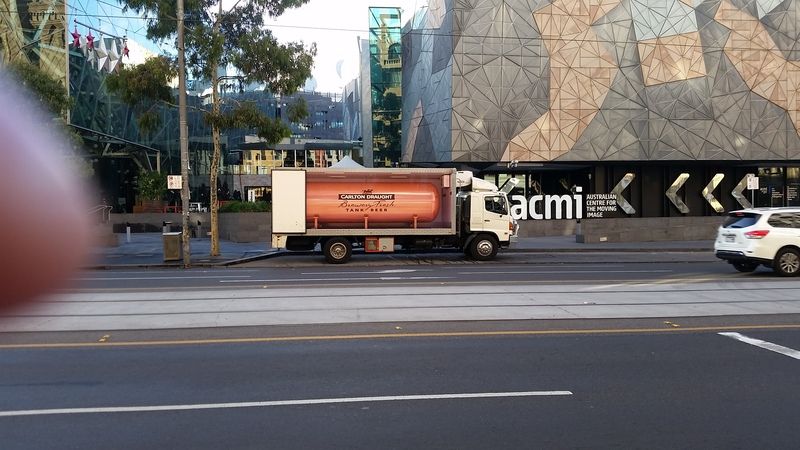Relations of mine had it at the Terminus at Abbotsford (literally down the road from the Abbostford plant) which is in the lairy copper tanks proudly displayed behind the bar. He's a Carlton Draught devotee when he's not in the mood for Dry or Melbourne bitter. Over a series of messages he was informed by the bar staff that it was unpasteurised and came direct from the fermentation tanks. I asked how it got the bubbles and there were suggestions that it was still fermenting...
???
Something lost in translation there. In any case he said it was better than the standard offering and not as gassy. Though I still found it odd that he repeated it was unpasteurised, as opposed to it simply being a beer which has not been packaged. Because really is there so much merit in a beer being unpasteurised that it should be celebrated? He didn't mention it was 99.9% fat free. Amusingly as Klangers said, they're not kitted to pasteurise using this delivery method so maybe the sales boffins have gone "this is going to be a nightmare to pasteurise doing it this way... why don't we just not pasteurise it, and then advertise it as unpasteurised? Most people don't even know what it means anyway" Basically writes itself.
I debate that it doesn't come in contact with air at any stage. What's in the tank before it's filled with liquid? CO2 undoubtedly, but that's no different to a normal packing line surely, be it in a keg or bottle. There will always be some exposure to O2.
I do however support the concept of moving beer in bulk like this because surely it's a more cost-effective / environmentally friendly method of moving beer than kegging and bottling. Obviously only suits popular beers though and would be tough to have a varied range served this way at an individual venue.











